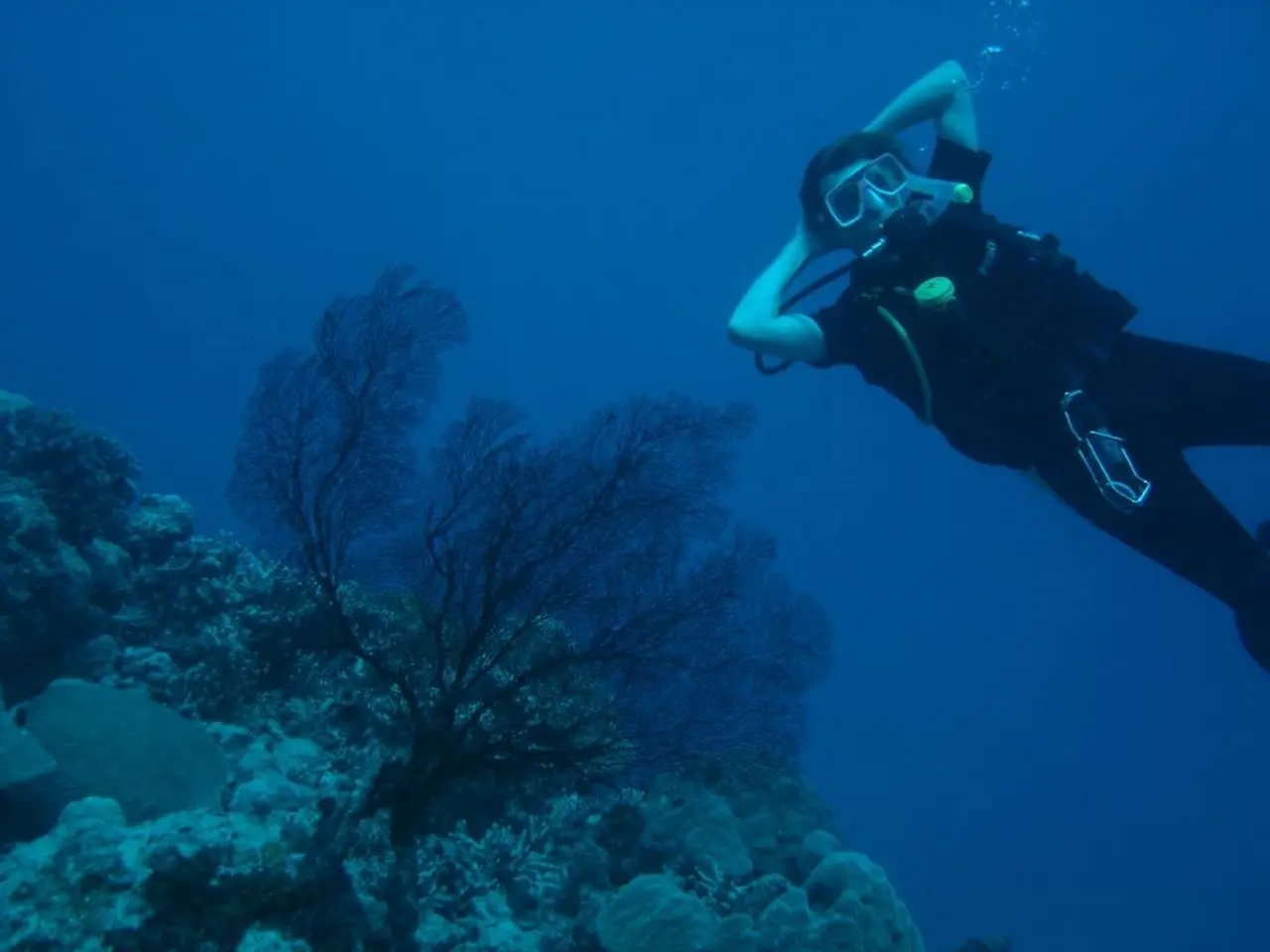Danger lurks in open-water swimming
Swimming in rivers like the Rhine and Ems can be an inviting way to cool off during the summer months, but it comes with several risks. To ensure a safe, legal, and supervised bathing experience in North Rhine-Westphalia, it is crucial to follow some guidelines.
Dangers of Swimming in Rivers --------------------------------
The Rhine, being a flowing river, can pose several threats to inexperienced swimmers and children. Strong and deceptive currents can be overwhelming, especially when water flow exceeds 1500 m³/s or the water level is above 6.5 meters [1][2]. Eddies, often unpredictable and not recognizable, can also be dangerous due to their strong suction that can pull even experienced swimmers to the bottom [1][2].
Large ships and boats navigating the river make swimming in harbor areas and near locks extremely dangerous, as vessels cannot avoid swimmers in these zones [1]. Jumping from bridges or other structures is also prohibited due to the risks of injury and the danger it poses to others [1].
Cold water temperatures can cause temperature shock, which may incapacitate swimmers suddenly [1][2]. Swimming aids such as water wings, air mattresses, and rubber boats are not allowed in the Rhine as they may increase risk [1]. Alcohol and drug use while swimming significantly increase the chance of accidents [1][2]. Although water quality in the Rhine has greatly improved since historical pollution crises, pollution risks still exist and must be assessed before swimming [4].
Ensuring Safe, Legal, and Supervised Bathing ---------------------------------------------
To ensure a safe, legal, and supervised bathing experience, it is recommended to swim only in officially designated and marked swimming areas or public bathing sites where supervision (lifeguards) is available [2]. These areas typically feature gentle slopes, signage, and are monitored for water quality.
Follow local swimming prohibitions, especially avoiding harbor zones, lock areas, and parts of the river known for heavy ship traffic [1]. Only swim if you are a confident swimmer, preferably not alone, and when water temperature is above 18°C [1]. Avoid swimming in bad weather, during thunderstorms, or when strong currents are present [1].
Observe local authorities’ updates on water quality and swimming safety conditions. In German states like North Rhine-Westphalia, use public lakes, open-air pools, or rivers where legal bathing is regulated and supervised. Avoid risky behaviors such as jumping from heights into the water, swimming under the influence, or using flotation devices not permitted [1].
Safe and Legal Bathing Options in North Rhine-Westphalia ----------------------------------------------------------
In the Rhein-Kreis Neuss, bathing is only permitted in public baths and leisure facilities at Kaarster and Straberg-Nievenheimer See. A bathing ban applies to all other gravel pits. The beach baths at Kaarster and Straberg-Nievenheimer See are represented on the beach map provided by the state environmental agency.
The beach map of the state environmental agency can be found online and provides information about safe, carefree, and legal bathing in North Rhine-Westphalia. The beach baths at Kaarster and Straberg-Nievenheimer See are part of the state environmental agency's beach map.
Entering operational areas without permission in rivers can result in trespassing charges. Bathing or entering prohibited areas by nature conservation law can be punished with high fines.
In summary, by adhering to these precautions, bathers can minimize risks associated with open water swimming in rivers such as the Rhine while complying with legal and safety regulations common to North Rhine-Westphalia and nearby regions [1][2].
References:
[1] Landesamt für Umwelt, Naturschutz, Landwirtschaft und Verbraucherschutz Nordrhein-Westfalen. (2021). Rhine bathing water quality. Retrieved from
[2] Rhein-Kreis Neuss. (2021). Swimming regulations. Retrieved from
[3] Kreiswerke Grevenbroich GmbH. (2021). Beach baths. Retrieved from
[4] Umweltbundesamt. (2021). Rhine water quality. Retrieved from
- To mitigate potential dangers in rivers like the Rhine and Ems, particularly for inexperienced swimmers and children, it's advisable to engage in science-based health-and-wellness activities such as swimming only in officially designated, supervised, and marked swimming areas that ensure a safe and legal bathing experience.
- In the pursuit of a healthy lifestyle and wellness, one should avoid engaging in risky behaviors like swimming in harbor zones, lock areas, or parts of the river known for heavy ship traffic, as these activities are prohibited and can pose significant health risks.




